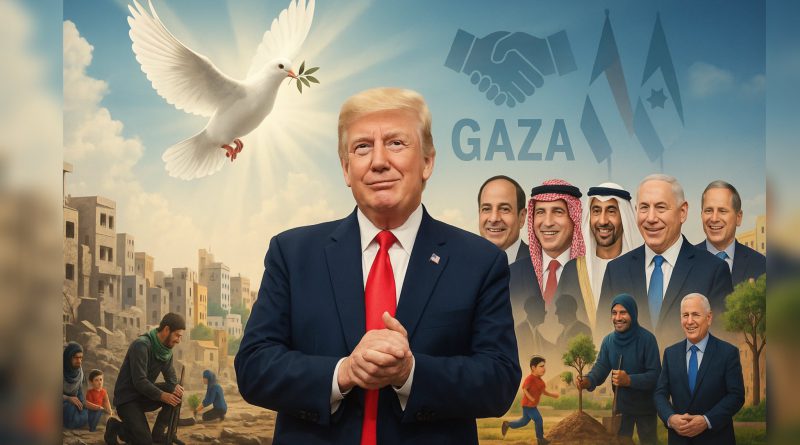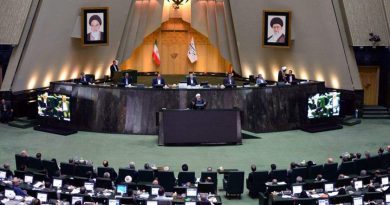OPINION: Trump’s Gaza Plan Could Redefine Middle East Peace
Trump’s bet is that bold leadership, pragmatic incentives, and strong enforcement can break the cycle of violence.
President Donald J. Trump has laid out what may be the most comprehensive blueprint yet to end the Gaza war. His Comprehensive Plan to End the Gaza Conflict is not just a ceasefire proposal; it is a political, security, and economic roadmap designed to transform Gaza from a battlefield into a functioning society.
Immediate Ceasefire Linked to Hostage Release
At its core, Trump’s plan freezes the battlefield: Israeli forces withdraw to agreed positions while all hostages are released within 72 hours of Israel’s acceptance. In exchange, Israel frees 250 life-sentence prisoners and 1,700 Gazans detained after October 7, 2023, including all women and children.
This sequence provides both sides with tangible gains—humanitarian relief for Gaza, the return of hostages for Israel—and creates momentum for broader steps.
Amnesty for Hamas Fighters
The plan also offers Hamas members a stark choice: decommission their weapons and embrace peaceful coexistence—or face continued war.
Those who comply would be granted amnesty; those who prefer to leave Gaza would receive safe passage abroad. This mechanism aims to weaken militancy while providing reintegration for those willing to break with violence.
A New Governance Model
To avoid repeating past failures, Trump proposes a technocratic Palestinian committee to manage daily governance under the supervision of a new international “Board of Peace.”
Chaired by Trump himself and joined by figures such as former British Prime Minister Tony Blair, this body would oversee reconstruction and ensure accountability until the Palestinian Authority completes reforms and can assume full responsibility.
This model ties governance directly to reform, avoiding a power vacuum while giving Palestinians a stake in effective administration.
Economic Development as Strategy
Trump also places heavy emphasis on economic revival. His plan calls for a special economic zone, preferential trade arrangements, and major investment in infrastructure—water, electricity, hospitals, bakeries.
Drawing on lessons from the Gulf’s “miracle cities,” the vision is to turn Gaza into a hub of jobs and opportunity rather than despair and extremism.
“No one will be forced to leave Gaza,” the plan states, “but those who wish to leave will be free to do so and free to return.” The goal is to encourage Gazans to stay, rebuild, and thrive.
Security Through an International Stabilization Force
Perhaps the most innovative piece is security.
Trump proposes an International Stabilization Force (ISF), developed with U.S., Arab, and global partners, to train vetted Palestinian police and coordinate with Israel and Egypt.
As the ISF gains control, the Israel Defense Forces (IDF) would progressively withdraw, handing territory to the ISF while retaining only a temporary security perimeter until Gaza is fully demilitarized.
Israel would not annex Gaza.
This arrangement aims to satisfy Israel’s security concerns while offering Palestinians an internationally guaranteed path to stability.
Toward a Political Horizon
Beyond demilitarization and reconstruction, Trump calls for interfaith dialogue and narrative change to foster peaceful coexistence.
If Gaza stabilizes and the Palestinian Authority reforms, conditions could finally emerge for a credible path to Palestinian self-determination—long a central aspiration of the Palestinian people.
Why It Matters
Unlike many past peace efforts, Trump’s proposal weaves together security, governance, humanitarian relief, and economic revival into one integrated framework. It sets clear benchmarks and responsibilities, ties international oversight to accountability, and insists on regional guarantees.
Critics will argue that Hamas is unlikely to comply, and that international oversight may prove unwieldy. But even partial implementation—in areas transferred to the ISF—would represent progress compared to endless war.
Trump’s bet is that bold leadership, pragmatic incentives, and strong enforcement can break the cycle of violence.
If it succeeds, this plan could mark a turning point—not only ending the Gaza conflict, but also reshaping the political landscape of the Middle East.



